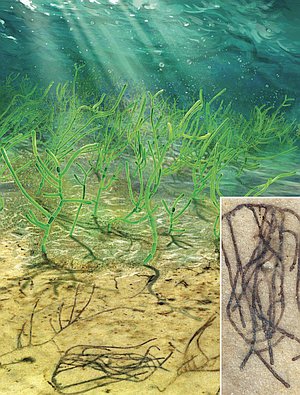Green seaweed now ‘200 million years older’

Located in rocks in Northern China, abundant specimens of fossil seaweed, just a few millimetres long, have added a whopping 200 million years onto its alleged history. The former record holder was ‘dated’ at 800 million years. So, the newly identified species of green seaweed, Proterocladus antiquus, is a billion years old in evolutionary time.
This means that such complex multicellular plant life existed “much earlier than previously thought”. Also, it means it has no known evolutionary ancestor. That is, it just appears fully formed in the fossil record.
Additionally, “a group of modern green seaweeds, known as siphonocladaleans, are particularly similar in shape and size” to these fossils.
Thus, this find has created two big problems for evolution. First, it has significantly shortened the time available for evolution to occur. Second, with these most likely modern representatives, no evolution has occurred in the supposed one billion years. It is one more ‘living fossil’.
God is clear that He formed all plant life fully functional on Day 3 around 6,000 years ago, which is consistent with finds like this.
- Tang, Q. and 3 others, A one-billion-year-old multicellular chlorophyte, Nature Ecology & Evolution 4, 24 Feb 2020.
- Starr, M., Look at these mind-blowing fossils of 1 billion-year-old seaweed; sciencealert.com, 25 Feb 2020.


Readers’ comments
Comments are automatically closed 14 days after publication.